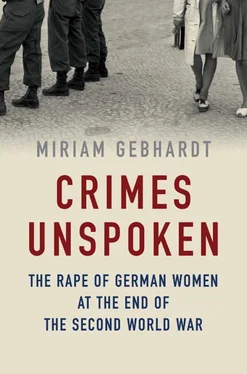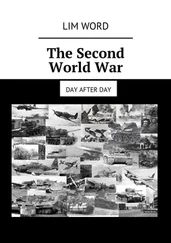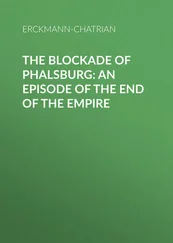Ibid., pp. 19–20.
Ingeborg Jacobs, Freiwild: Das Schicksal deutscher Frauen 1945 (Berlin 2008), pp. 72–4.
Albrecht Lehmann, Im Fremden ungewollt zuhaus: Flüchtlinge und Vertriebene in Westdeutschland 1945–1990 (Munich 1993).
Bundesministerium für Vertriebene (ed.), Dokumentation der Vertreibung der Deutschen , vol. I/1, p. 23.
Mathias Beer, ‘Die Dokumentation der Vertreibung der Deutschen aus Ost-Mitteleuropa (1953–1962): Ein Seismograph bundesdeutscher Erinnerungskultur’, in Jörg-Dieter Gauger and Manfred Kittel (eds.), Die Vertreibung der Deutschen aus dem Osten in der Erinnerungskultur, Eine Veröffentlichung der Konrad-Adenauer-Stiftung e.V. und des Instituts für Zeitgeschichte (Sankt Augustin 2004) pp. 17–37; for discussion on the victims, see pp. 17–31, here pp. 21–2.
For discussion of the documentation, see Robert G. Moeller, War Stories: The Search for a Usable Past in the Federal Republic of Germany (Berkeley 2001), pp. 51–87.
All names have been abbreviated in this book, even if they are named in the sources. In cases from very small villages or ones that are easily identifiable for other reasons, I have also changed the initials. I only give full names when the victims have published their stories under their own names.
Bundesministerium für Vertriebene (ed.), Dokumentation der Vertreibung der , vol. I/1, pp. 28–31.
Ibid., pp. 59–61.
Ibid., pp. 63–4.
Ibid., p. 101.
Ibid., p. 181.
Ibid., p. 196.
Ibid., p. 198.
Ibid., p. 223.
Ibid., p. 265.
Ibid., p. 268.
Ibid., p. 274.
Gela Volkmann-Steinhardt, Eine Stimme aus der pommerschen Passion: Erlebnisse aus dem deutschen Zusammenbruch 1945 (Freiburg i. Brsg. 1993), p. 128.
Ibid., p. 135.
Gabi Köpp, Warum war ich bloss ein Mädchen? Das Trauma einer Flucht 1945 (Munich 2010), pp. 78–9.
A. A. Smirnov, head of the IIIrd Section of the People’s Commissariat for Foreign Affairs of the USSR on 21 March 1945 on the situation in the German territories occupied by the Red Army, quoted in Scherstjanoi, Rotarmisten schreiben aus Deutschland , p. 121.
Ryan, The Last Battle , p. 328.
Ibid., p. 329.
Ibid., pp. 362–3.
Ibid., p. 363.
Ibid., p. 382.
Ibid., p. 383.
Ibid., p. 352.
Ruth Andreas-Friedrich, Schauplatz Berlin: Ein deutsches Tagebuch (Berlin 1964 [1946]), p. 193.
BA Koblenz B 126/28038 Berliner Finanzsenator on 28 March 1957.
Andreas-Friedrich, Schauplatz Berlin , pp. 215–16.
Landesarchiv Berlin C Rep. 118/398.
Regine Nohejl, ‘Einführung: Nation und Gender in der russischen Kultur’, in: Nohejl, Olga Gorfinkel, Friederike Carl and Elisabeth Cheauré (eds.), Genderdiskurse und nationale Identität in Russland: Sowjetische und postsowjetische Zeit (Munich 2013), pp. 7–16.
Naimark, Die Russen in Deutschland , p. 93.
See Erich Kuby, Die Russen in Berlin (Munich 1965), p. 304.
Kurt Arlt, ‘“Nach Berlin” – Der Kriegsverlauf an der Ostfront und seine Auswirkungen auf Motivationen und Stimmungen in der Roten Armee’, in: Elke Scherstjanoi, Rotarmisten schreiben aus Deutschland , pp. 28–9.
Elke Scherstjanoi, ‘Sowjetische Feldpostbriefe vom Ende des Grossen Vaterländischen Krieges als Quelle für historische Forschung’, in: Scherstjanoi, Rotarmisten schreiben aus Deutschland , pp. 28–9.
Vladimir Gelfand, Deutschland-Tagebuch , pp. 13–14.
Ibid., p. 31.
Ibid., p. 44.
Ibid., pp. 79–80.
Ibid., p. 89.
Catherine Merridale, Ivan’s War: The Red Army, 1939–1945 (London 2005), p. 272.
Ibid.
For some years, attention has been paid in the Soviet Union as well to the situation in the last months of the war, and the treatment of the civilian population in the countries the advancing army battled through, although the subject of mass rape is still one that has not been studied to any great extent. All the same, there is now a good research basis on the Soviet view of the war and the German aggressor. The Department of Modern History in Munich, for example, compiles the research and publications of German and Soviet scholars and makes possible the publication of studies on the history of the mutual perceptions and attitudes of the Red Army and German civilians during the conquest and occupation of German territory.
These studies help us to understand the thinking of the Red Army soldiers, who are still seen as primarily responsible for the mass rape of German women. Elke Scherstjanoi has compiled a selection of 161 letters by Russian soldiers in the last months of the war, relating their attitudes and experiences in Germany. See Scherstjanoi, ‘Sowjetische Feldpostbriefe’, in: Scherstjanoi, Rotarmisten schreiben aus Deutschland , pp. 3–193.
Ibid., p. 31.
Ibid., p. 36.
Ibid., p. 39.
Ibid., p. 41.
Ibid., p. 42.
Ibid., p. 46.
Ibid., p. 52.
Aleksandr V. Perepelicyn and Natalya P. Timofeeva, Das Deutschen-Bild in der sowjetischen Militärpropaganda während des Grossen Vaterländischen Krieges (Munich, 2004), pp. 267–86.
Carola Tischler, ‘Die Vereinfachungen des Genossen Ehrenburg: Eine Endkriegs- und eine Nachkriegskontroverse’, in: Scherstjanoi, Rotarmisten schreiben aus Deutschland , pp. 326–39, here pp. 330–3.
Scherstjanoi, pp. 60–1.
Ibid., p. 114.
Ibid., p. 145.
Ibid., p. 132.
Ibid., p. 151.
Ibid., p. 160.
The motive of revenge is convincingly discussed by Norman M. Naimark, most recently in ‘The Russians and Germans: Rape during the War and Post-Soviet Memories’, in: Branche and Virgile (eds.), Rape in Wartime , pp. 201–19.
Читать дальше











